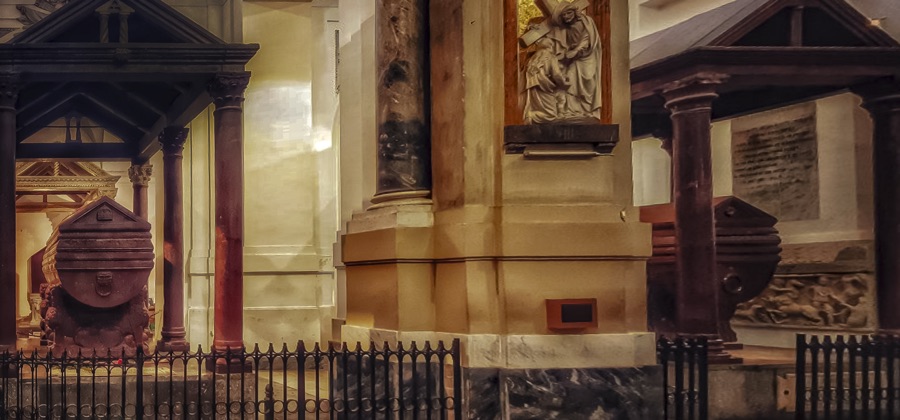The canopied sarcophagi of Palermo Cathedral, used as burial places for Henry VI and Frederick II, were carved using porphyry elements, likely coming from Rome. The marble craftsmen therefore copied ancient specimens and sketched them out, if not finished, in Rome, where there were Islamic craftsmen or craftsmen from Egypt and Constantinople, specialised in working this particular marble.
The sarcophagi, destined for the Cathedral of Cefalù, were ordered by Roger II before 1145: one to house his mortal remains, the other to glorify his memory. But, after his death in 1154, his wishes were not respected. Frederick II had them transferred to the Palermo Cathedral, to be used for himself and for his father Henry VI. Currently, the first King of Sicily rests in a tomb, also made of porphyry with a sloping lid, located in the Palermo Cathedral.
The sarcophagus where Frederick II rests has a very complex iconography. In fact, one can notice the affinity between the lions painted on the ceiling of the Palatine Chapel and those supporting the Islamic-style sarcophagus. Other classical and Byzantine references, widespread in Norman iconography, include the clipei on the lid with the Pantocrator, the Madonna and Child and the Symbols of the Evangelists and the porphyry protomes on the entablature of the canopy. The classical and Byzantine iconography alludes to the triumph of imperial power while the lion-shaped supports echo the beasts depicted in the original Hauteville arms.